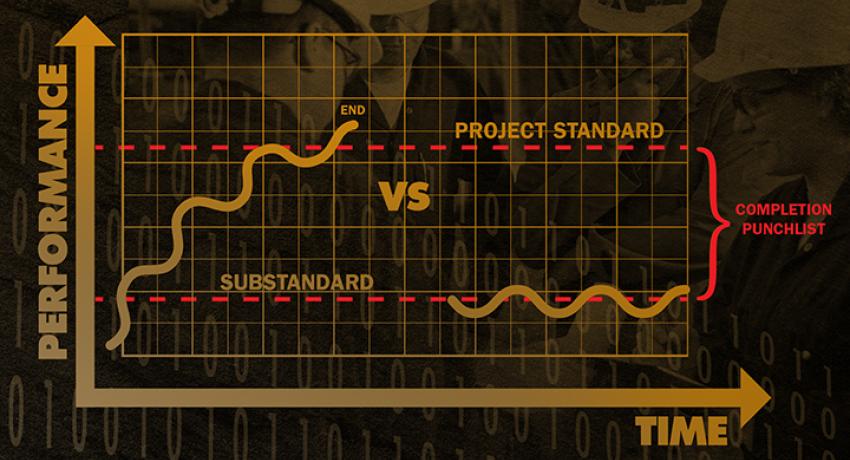Facilities built with continuous improvement are always superior to Facilities repaired from large completion puchlists.
The above graphic illustrates a fundamental problem with completion punch-lists. The gap between what was purchased, and the delivered plant, can become quite material. While a completion punch-list is vastly preferred to an unstructured approach, the scale of the real shortfall may become uncomfortably large for both the owner and contractor. This can lead to other commercial and relationship complexities.
There is also another point to consider, namely, a completion punch-list cannot easily verify the workmanship that is not visible. Not only is this a significant part of the work, it can be argued that it may be the most important work.
So, no matter how aggressive an owner wants to become with a completion punch-list effort, there are shortcomings.
When the SLATE process was originally conceived, it was used to build large-scale punch-lists. However, it was clear that no matter how exceptional EPS was at creating lists, owners would have vastly preferred a well-built plant rather than an after-the-fact list of defects.
While SLATE is a very powerful completion punch-list platform, SLATE’s greater value is to raises contractor performance starting early in the project, so large lists of problems can be avoided.
This is real success…




